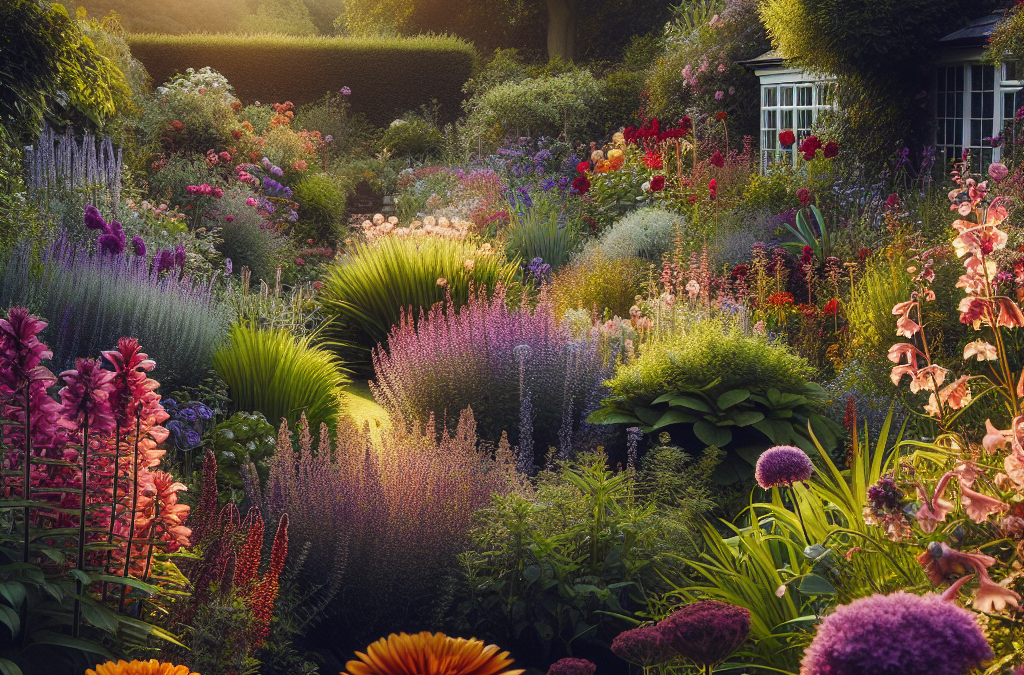Choosing the Right Location
Assessing Sunlight
When I first started my cutting garden, I had no idea how crucial sunlight would be. Choosing a spot that gets around six to eight hours of sun each day was a game-changer for me. You want your perennials blooming at their best, right? So, take a little time to watch where the sun hits your yard before you dive in.
Also, keep in mind that some plants prefer full sun, while others can tolerate a bit of shade. After doing some homework (thanks, Google!), I found that combining a variety of sunlight needs can really create a stunning garden layout. Mix and match to see what works for your space!
Lastly, don’t forget about morning sunlight! I love how the early rays really wake up my garden. It sets a beautiful tone for the day and helps to dry out any dew that can lead to fungal issues in the evening. So, prioritize positioning your garden where it catches those golden hours!
Soil Quality Matters
Man, if I had a dollar for every time I skimped on testing my soil, I wouldn’t need this garden! Good soil is absolutely essential for growing vibrant perennials. I learned this the hard way and ended up with a patch of sad plants that didn’t bloom. Now, I always check the pH and the nutrient content first. You want that soil to be rich and balanced.
If your soil isn’t great, don’t panic! There are plenty of ways to improve it. Compost is a miracle worker, and I swear by it. Plus, adding organic matter improves drainage, which is something your plants will thank you for. Think of your soil as a cozy little bed for your plants; they need the right environment to thrive!
Don’t forget to keep an eye on drainage, too. Waterlogged roots will spell disaster for any perennial. If you notice standing water after a heavy rain, consider amending your soil or even building raised beds. Trust me; happy plants make for a happy homesteader!
Creating Defined Beds
At first, my garden looked more like a jungle than a well-manicured cutting garden. Defining your planting beds can make a world of difference. I learned to use natural materials like logs or stones to create clear boundaries for my plants. It not only helps with organization but also adds a rustic charm that I adore.
When planning my layout, I now think about accessibility. Space out your plants so you can easily reach in for those beautiful blooms without trampling others. Plus, a little bit of walking space can help with air circulation, keeping your entire garden healthier.
Some folks even incorporate pathways, and I can see why! They add a nice aesthetic and make maintenance a breeze. Consider mulch or gravel until your perennials fill in—this way, you won’t be wrestling with weeds every weekend!
Picking the Perfect Perennials
Popular Choices
Choosing perennials can be such a fun adventure! There’s something magical about watching your favorite flowers come back year after year. Some of my go-to picks include echinacea, rudbeckia, and peonies. These beauties not only look stunning but are also perfect for cutting. You’re going to love how they brighten up your home!
When I first started, I went with too many unique varieties thinking diversity was key. While that can be true, I learned that having a solid base of reliable blooms can make all the difference in your arrangements. Stick to a few favorites, then expand as you get the hang of things.
Be sure to choose perennials that will thrive in your climate as well. Check out local resources or garden centers for advice! They know what works best in your area and might have some unique local varieties that would shine in your garden.
Season-Long Blooms
One of my goals was to have something blooming from spring through fall. This took a bit of planning, but trust me, it’s totally worth it! I staggered my plantings and chose perennials with varying bloom times. For instance, I have irises popping up in early spring, followed by the delightful late-summer blooms of asters.
This planning also helps keep your garden looking fresh and vibrant, which is essential if you’re cutting for bouquets. I love creating arrangements for my kitchen table or for friends, and having a continuous bloom ensures there’s always something to snip!
Don’t forget to deadhead regularly! That’s the trick to encouraging your plants to produce more flowers. I set aside a little time each week to tidy up, and my blooms truly thank me for it by putting on a fabulous show!
Companion Planting
Companion planting was something I stumbled upon after realizing some of my plants weren’t thriving next to each other. Certain perennials, like marigolds, help repel pests, while others can even attract pollinators. I’ve integrated a few of these into my beds, and my plants have never looked better!
Pairing certain flowers with others can boost growth, making them even more productive. For example, I’ve had great luck with planting my daisies alongside echinacea. They look great together, and the pollinators just love the combo! Who doesn’t want more butterflies in their garden?
Lastly, always keep an eye on your garden’s health. Sometimes, it just takes a bit of rearranging to find the perfect companions. Don’t be afraid to experiment and see what works best for your space—gardening is all about learning and adapting!
Maintenance and Care
Watering Wisely
Watering could honestly be an art form! Initially, I was a bit haphazard about it, but over time, I found rhythm. It’s vital to water deeply but infrequently. This promotes a strong root system. I typically water in the mornings when the temperatures are cooler; it helps reduce evaporation too!
Check the soil before watering; if it’s still damp a couple of inches down, hold off! This helps me avoid any root rot issues. And if it’s hotter, increase frequency but don’t drown ’em. These are perennials, after all—they can take the heat if cared for right!
Mulching is another trick I picked up. It not only helps retain moisture but keeps the weeds in check and can look pretty attractive as well! So, do yourself a favor: spread that mulch around your plants—it’s a watering game-changer!
Fertilizing Your Perennials
When it comes to feeding my plants, I like to keep it as natural as possible. Organic fertilizers have become my go-to. I love using compost or well-rotted manure—it’s like a buffet for my plants. They thrive on that stuff, and it makes me feel good knowing I’m not loading them up with chemicals.
Timing your fertilization can really help. I usually fertilize in early spring when the plants are waking up and again after the first big blooms. This way, I encourage them to keep producing those beautiful flowers without overwhelming them.
Occasionally, I’ll test my soil again to check what nutrients might be lacking. It’s just a good practice! Once I learned this, my plants have been consistently healthier and more robust. Keep an eye on ’em—nature gives us great clues!
Pest and Disease Management
No garden is without its pests, right? I’ve had my fair share of battles with aphids and slugs. However, what I’ve found works best is monitoring regularly; scouting for any signs of trouble before they become a huge issue is key!
Integrated Pest Management (IPM) has saved my garden more times than I can count. This means using beneficial insects like ladybugs to combat those nasty aphids. I try to maintain a healthy ecosystem in my garden, so I let nature do its thing as much as possible. Plus, I use organic remedies like neem oil only when needed.
Disease prevention is also crucial. Good airflow and spacing help combat fungal diseases. I always ensure I don’t overcrowd my plants. Healthy plants are less susceptible to diseases, so sticking to that rule helps keep the garden happy!
Creating Arrangements with Your Blooms
The Basics of Floral Design
When it comes time to cut my flowers, I remember one simple rule: leave enough blooms on the plants for them to continue thriving! I never take more than a third of any plant, making sure they stay healthy. This was a valuable lesson learned over time!
As for design, begin with a variety of shapes. A mix of spiky flowers, round blooms, and cascading greenery creates visual interest in your arrangements. I often find myself cutting and rearranging a few times to get that perfect balance. Don’t be afraid to play around!
And always remember texture! Adding in some foliage not only fills out your arrangements but can also add depth. I usually cut bits of hostas or ferns as supporting players. They help my flowers shine and give it that professional touch. You’ll be amazed at how a little greenery can elevate your bouquets!
Choosing the Right Vases
Believe it or not, choosing the right vase can make or break your arrangement! I’ve tried everything from mason jars to elegant glass vases. It’s all about the look you’re going for. For a casual vibe, I lean towards rustic jars, while more formal bouquets get my glass favorites.
Think about the height of your flowers, too. Tall flowers need a sturdy, tall vase, while shorter stems will look better in smaller containers. I’ve learned (sometimes the hard way) that the wrong vase can leave your stunning work looking droopy.
Another handy tip is to use floral tape or wire to create a grid on the top of your vase. This’ll help keep your flowers in place and can make your arrangement look far more cohesive. Trust me, that small step can make a significant difference!
Caring for Cut Flowers
Once my flowers are cut, I treat them like royalty! It’s key to place them in water immediately, using a clean container to prevent bacteria. Before placing them in, I always cut the stems at an angle—it helps them drink up water like champs!
Keep your arrangements out of direct sunlight and away from ripening fruit (Frankly, I didn’t know this at first—d’oh!). They’ll last much longer if you keep them in a cooler spot. I often give my arrangements a refresh with new water every few days to keep them looking perky!
Lastly, don’t hesitate to remove any wilted blooms. It may seem small, but this practice keeps your arrangements looking full and vibrant. Trust me, no one wants to see a sad, droopy flower in the middle of a bouquet!
Frequently Asked Questions
What are the best perennials for a cutting garden?
Some top choices include echinacea, rudbeckia, peonies, asters, and daisies. These beauties not only add color but are perfect for cutting and bringing indoors. Experiment and discover what works best in your garden!
How do I make my perennials bloom longer?
To encourage longer blooming, stagger your planting times and choose varieties with different bloom periods. Also, don’t forget to deadhead regularly to promote new growth!
What should I do if my perennials aren’t thriving?
If your plants aren’t doing well, check the sunlight, soil quality, and hydration. Over or under-watering can be an issue. Sometimes a little re-arranging or amending the soil can lead to a major turnaround!
How can I attract pollinators to my cutting garden?
Planting a wide variety of perennials, particularly those that bloom at different times, will attract more pollinators. Adding plants like marigolds and lavender can also help entice bees and butterflies!
When is the best time to cut flowers for arrangements?
The best time to cut your flowers is in the early morning when they’re most hydrated. Pick them before the heat of the day sets in, and this will maximize their longevity in arrangements!





